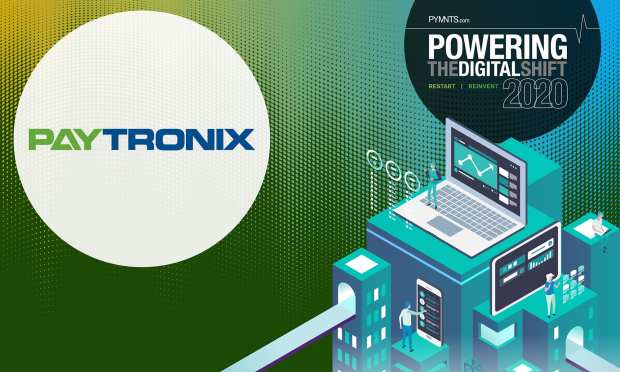Give Consumers A Hand With Contactless Transactions

“Contactless environments will be crucial for companies as they welcome customers back. The pivot here is that customers are expecting brick-and-mortar locations to replicate eCommerce, providing a personalized, contactless experience from entry through checkout.”
It’s a strange, exciting time in retail. Tens of millions want to get back outside, and back inside stores, too — which means that invisible COVID-19 coating we fear has to be addressed. “Today’s consumers cringe if you ask them to use a keypad to type their phone number for loyalty program identification,” said Jerry Cressman, chief financial officer at Paytronix. “That physical component raises a safety concern, forcing consumers to decide whether the loyalty reward is worth the risk. Now that Paytronix has combined contactless payment and loyalty identification in a single tap, more than 4,000 restaurant locations have been employing this solution through Apple Pay and Google Pay.”
The following is an excerpt from How 35 Execs Are Powering The Great Digital Shift Of 2020 (And Beyond), contributed by Jerry Cressman, chief financial officer at Paytronix.
Six months ago, consumers focused on convenience as the primary decision-making factor, asking only, “How do I get through this line the fastest?” Now, they ask, “How do I get through this line touching as little as possible?” Health and safety have become the key drivers for both employees and customers.
Contactless environments will be crucial for companies as they welcome customers back. The pivot here is that customers are expecting brick-and-mortar locations to replicate eCommerce, providing a personalized, contactless experience from entry through checkout.ix months ago, consumers focused on convenience as the primary decision-making factor, asking only, “How do I get through this line the fastest?” Now, they ask, “How do I get through this line touching as little as possible?” Health and safety have become the key drivers for both employees and customers.
For easy payment, there are existing solutions that utilize NFC technology, such as tap-and-go credit cards and mobile wallets. But recognizing a loyalty account necessitates a second transaction at the point of sale for most retailers. Today’s consumers cringe if you ask them to use a keypad to type their phone number for loyalty program identification. That physical component raises a safety concern, forcing consumers to decide whether the loyalty reward is worth the risk. Now that Paytronix has combined contactless payment and loyalty identification in a single tap, more than 4,000 restaurant locations have been employing this solution through Apple Pay and Google Pay.
COVID-19 prompted both restaurants and convenience stores to offer digital ordering options if they weren’t already doing so. Within days of locations shutting down, Paytronix had introduced a rapid-launch digital solution and updated its order and delivery platform with options that facilitated a contactless experience. In June, it launched a contactless solution that enables restaurant guests to order from the table using their mobile device. The flow is similar to that of traditional table service, as multiple orders can be placed until the party is ready to close out the check. The ability to access digital menus, place orders and process payment via a mobile device delivers a satisfying contactless dining experience.
Coupling digital ordering and payment with loyalty identification helps brands predict, personalize and profit from transactions. Those that were first to implement the technology, such as Jimmy John’s and Panera Bread, have demonstrated an unmatched understanding of customers’ needs and are reaping considerable benefits. Having a top-notch loyalty program has also helped insulate these brands from the full impact of the pandemic. Paytronix has seen a decline of about 40 percent in transactions with loyalty members, whereas non-loyalty transactions have typically decreased nearly 70 percent. Because brands with a loyalty program are likely to recover twice as quickly as those without one, the cost of not knowing their customers is a financial risk that CFOs simply can’t afford.
Read more executives’ insights in How 35 Execs Are Powering The Great Digital Shift Of 2020 (And Beyond).
